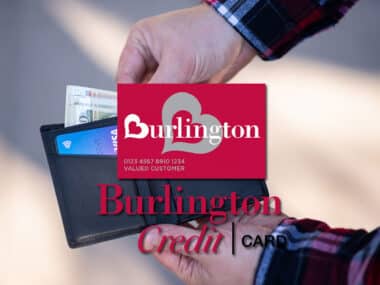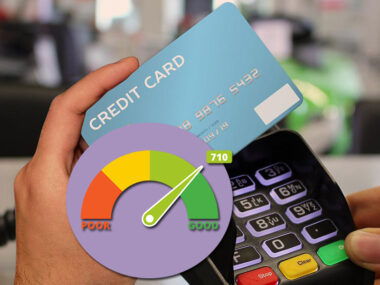If you recently checked your credit report and learned you have a score of 726, you should feel pretty good about yourself. After all, Experian classifies this as “Good,” a range to which 21% of Americans belong.
Overall, there are five different credit score ranges, including:
- 300 to 579 (Poor).
- 589 to 669 (Fair).
- 670 to 739 (Good).
- 740 to 799 (Very Good).
- 800 to 850 (Exceptional).
A 726 score indicates that you pay most of your bills on time, have low-to-moderate utilization, and practice good overall credit management. All told, you’ll qualify for better credit and loan interest rates, although not as good as a Very Good or Excellent score.
Here, we’ll address what types of credit you’ll qualify for, along with how you can improve your 726 score. Let’s start by taking a look at some of the reasons why your credit score is what it is.
Table of Contents
Why Your Credit Score Is 726
What might cause your credit score to reach 726? There are numerous factors unique to you, which we’ll explore below.
Good Credit Management
If you have a 726 score, you’ve likely practiced good credit management, including one or more of the following:
- Remaining organized, and knowing which bills are due and when;
- Keeping track of your spending;
- Not approaching or exceeding your credit limits on loans and cards. Doing so can negatively impact your score;
- Paying what you owe each month. Ideally, you’ll want to pay the balance in full, but at least the minimum due, and by the stated due date;
- Utilizing automatic payments to make sure you don’t miss any payments;
- Avoiding canceling older credit cards so that you can maintain a longer credit history;
- Making sure your credit report doesn’t contain any errors;
- Maintaining a low overall debt load;
- Monitoring your credit score, so you receive notifications whenever your score changes.
With these factors in mind, let’s briefly discuss how long you’ve had your credit accounts, and how it can impact your score.
Average Credit Account Age
The length of time you’ve had credit, or the ages of your accounts, make up 15% of your total credit scores. This factor is calculated by adding up the age of all your credit accounts and then dividing by the total number of those accounts.
For example, imagine that you have five different credit accounts: two are three years old, two are four years old, and the final account is only one year old. Adding all of these up, you have 15 years worth of credit. Fifteen (years) divided by five (the number of accounts) equals an average account age of three years.
Pulling these details together, the longer your credit history, the higher your credit score will be. After all, this factor signals to lenders that you have more experience with credit, you’re likely to repay your loans on time, and you’re less likely to make occasional later payments or miss one altogether.
With a 726 score, you may have a relatively short credit history that impacts your score, but you can balance this by effectively managing your credit.
Occasional Late or Missed Payments
Your payment history is one of the most significant components (35%) of your credit score, so even just one late payment can have a detrimental impact. In fact, a payment that’s 30 days late or more can drop your credit score by 100-plus points.
For example, if you’re just a few days late, most companies won’t report this slip-up to credit reporting agencies until you’re at least 30 days past due. In some instances, businesses won’t report it until you haven’t paid in 60 days. But once they do, you can expect a drastic drop in your score.
If you have a good credit score, it might be the case that you occasionally made a late payment or have missed one altogether. But for the most part, you pay your bills on time, which you should continue doing to maintain your Good credit score.
Your Overall Credit Mix
Ten percent of your score is calculated based on your mix of credit accounts. Creditors want to see that you can successfully manage different lines of credit, which lowers their risk of default. The types of accounts they’re looking for include:
- Credit cards — Traditional cards that charge interest if your balance isn’t paid in full each month. This category includes gas station cards.
- Retail accounts — A popular financing option provided by certain retailers to qualifying customers.
- Installment loans — You’ll receive a certain amount of money, which you agree to repay over a set time in regular, equal installments.
- Finance company accounts — Although they lend to individuals and businesses, compared to banks, finance companies don’t receive cash deposits from clients, nor do they provide access to checking accounts.
- Mortgages — You receive a certain amount of money to purchase a home, after which you make regular monthly installments. This category includes HELOCs (home equity lines of credit).
- Auto and student loans — These loans help you purchase a car or attend secondary education, respectively.
Keep in mind that you don’t need to have all of these accounts in place, only a solid mix of several to show creditors that you’re a responsible borrower. Also, at just 10%, and all things being equal, it’s important to point out that if you don’t have an ideal mix of credit accounts, it likely won’t have a hugely detrimental impact on your score.
High Credit Utilization
If you carry large revolving balances compared to your total credit limits, it can negatively impact your credit score.
For example, imagine that you have three credit cards with $5,000 balances each. If you’ve racked up revolving balances (i.e., you don’t pay them in full each billing period) of $4,000, then your utilization is considered high. Fortunately, with a 726 credit score, your utilization is probably low.
Now that you have a better idea of which factors led to your 726 score, let’s find out what you can do with it.
What Can You Do With a 726 Credit Score?
With a 726 score, unlike a Very Poor or Fair score, businesses will see you as a good candidate for many loan types and other forms of credit, including:
- No-annual-fee cards;
- Large bonus and rewards cards;
- 0% introductory interest rate cards;
- No-foreign-fee cards;
- Credit cards for your favorite store;
- Airline and hotel cards.
However, you won’t qualify for just any credit card, and to obtain the best mortgage rates, insurance premiums, and auto and personal loans, you’ll want to increase your score. Let’s discuss different ways you can accomplish this.
How to Improve a 726 Credit Score
A 726 credit score is at the upper end of the Good range, so it’s possible to increase it into the Very Good (740 to 799) or even Exceptional (800 to 850) range.
To do so, you’ll need to focus on:
- Always make payments on time;
- Maintaining low credit utilization rates;
- Having mixed and aged (two-plus years) account types with no collections;
- Fewer than three hard credit pulls within the past 24 months.
Another important aspect is to ensure your credit report doesn’t contain inaccurate information, which can negatively impact your score.
Image Source: https://depositphotos.com/





